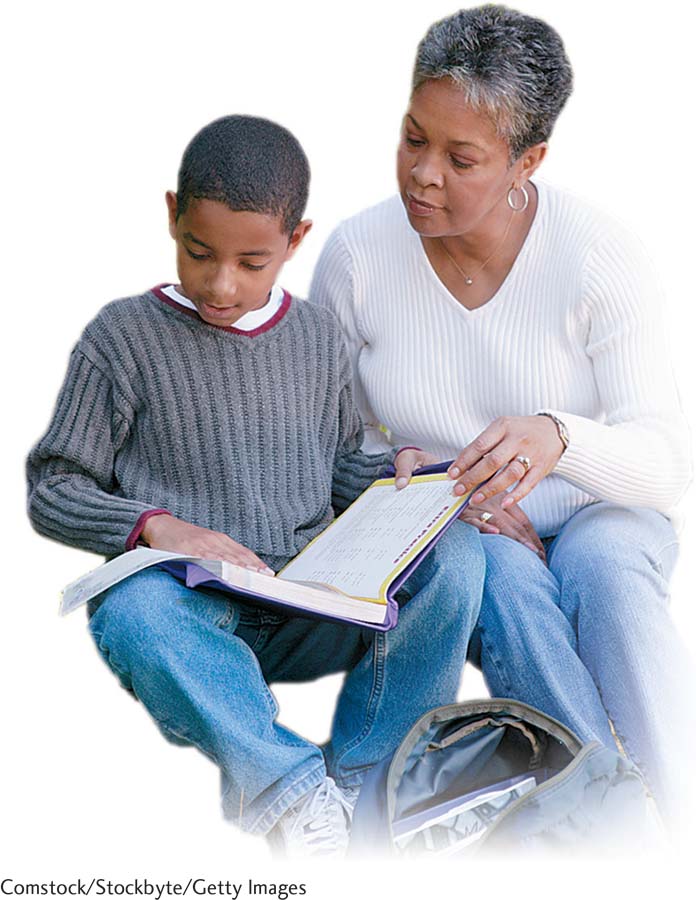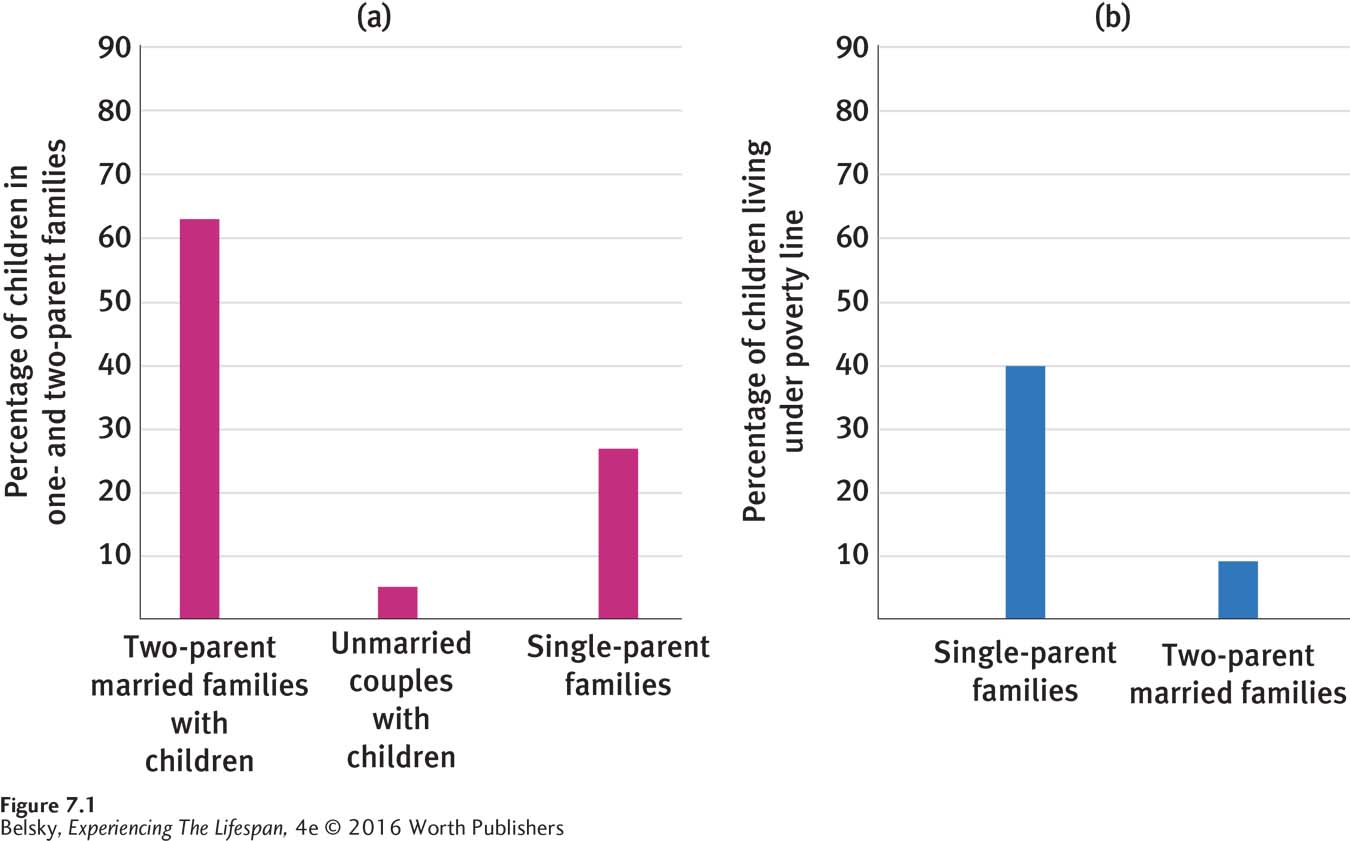7.1 Setting the Context

Parenting grandmothers, such as this woman helping her grandson with his homework, show that strong, loving families come in many forms. What exactly is this grandma doing right? This is the question we will explore in this next section.
Comstock/Stockbyte/Getty Images
As of 2012, the traditional nuclear family—heterosexual married couples with biological children—had dwindled to less than half of U.S. households. Of these, a significant percent were blended families—spouses divorced and remarried—so children had stepparents and, often, stepsiblings. Five percent of U.S. children were raised by unmarried couples; two million had gay or bisexual parents; a smaller but growing number of boys and girls (1.3 million) were being brought up by their grandparents alone (Healthychildren.org, n.d.).
The most important distinction relates to the 1 in 4 U.S. children being raised by single parents (see Figure 7.1). In particular, in mother-headed families, poverty is not an infrequent fate—2 out of 5 of these children live under the poverty line (see Vespa, Lewis, & Kreider, 2013).

Figure 7.1: Living arrangements of children in U.S. families: Chart (a) shows that the two-parent married couple family is still the most common one—a family form that includes the traditional nuclear family and nontraditional forms. Chart (b) shows that children who live in single-mother families have roughly four times the odds of living under the poverty line as boys and girls whose parents are married.
Source: Vespa and others, 2013.
On a brighter note, due to a global influx of immigrants, the developed world is blessed with a beautiful mosaic of ethnicities. What is your country of origin? What generation American, or Australian, or Scandinavian are you?

